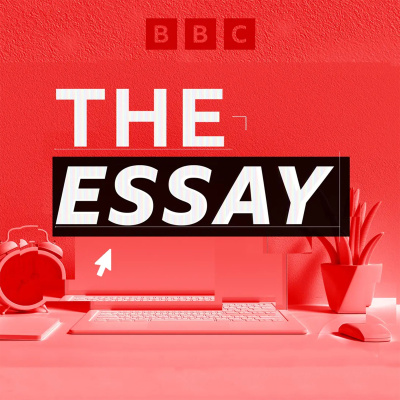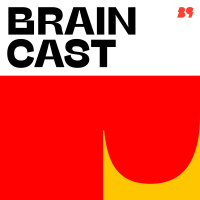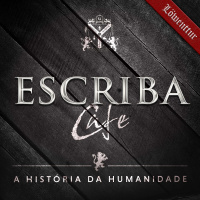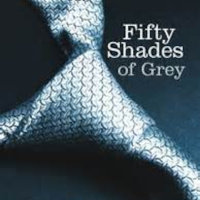Synopsis
Leading writers on arts, history, philosophy, science, religion and beyond, themed across a week - insight, opinion and intellectual surprise
Episodes
-
Educating Ida
15/03/2018 Duration: 13minGilbert and Sullivan gave university-educated women the English comic operetta treatment in their eighth collaboration, Princess Ida (1884) but why did the most famous musical duo of their day choose to make fun of them? To find out, New Generation Thinker Dr Eleanor Lybeck, from the University of Oxford, looks at protests, popular culture and a group of pioneering Victorian women who saw education as the first step towards emancipation. Recorded with an audience at Sage Gateshead as part of Radio 3's Free Thinking Festival. New Generation Thinkers is a scheme run by BBC Radio 3 and the Arts and Humanities Research Council to select ten academics each year who can turn their research into radioProducer: Zahid Warley.
-
Does Trusting People Need a Leap of Faith?
15/03/2018 Duration: 18minTom Simpson looks at a study of suspicion in a 1950s Italian village and the lessons it has for community relations and social tribes now. Edward Banfield's book, The Moral Basis of a Backward Society, depicts a village where everyone is out for themselves. New Generation Thinker Tom Simpson is Associate Professor of Philosophy and Public Policy at the Blavatnik School of Government, University of Oxford. He argues that we are losing the habits of trust that have made our prosperity possible. Unless we learn how to reinvigorate our cultures of trust, we ourselves have a future that is backwards. New Generation Thinkers is a scheme run by BBC Radio 3 and the Arts and Humanities Research Council to select ten academics each year who can turn their research into radio. Producer: Luke Mulhall.
-
Art for Health's Sake
14/03/2018 Duration: 13minAn apple a day is said to keep the doctor away but could a poem, painting or play have the same effect? Daisy Fancourt is a Wellcome Research Fellow at University College London. In her Essay, recorded with an audience at Sage Gateshead for the Free Thinking Festival, she looks at experiments with results which which prove that going to a museum is known to enhance neuronal structure in the brain and improve its functioning and people who play a musical instrument have a lower risk of developing dementia. What does this mean for our attitudes towards the arts and what impact are arts prescriptions having ?Daisy Fancourt has published a book called Arts in Health: Designing and researching interventions .New Generation Thinkers is a scheme run by BBC Radio 3 and the Arts and Humanities Research Council to select ten academics each year who can turn their research into radioProducer: Zahid Warley.
-
Welling Up: Women and Water in the Middle Ages
14/03/2018 Duration: 13minHetta Howes looks at male fears and why Margery Kempe was criticised for crying and bleedingMedieval mystic Margery Kempe's excessive, noisy crying made her travelling companions so irritated that they wanted to throw her overboard, while others accused her of being possessed by the devil. But Kempe believed she was using her tears as a way to connect with God, turning the medieval connection between women and water into a form of bodily empowerment and a holy sign. New Generation Thinker Hetta Howes, from City, University of London, explores the connections between medieval women and water. New Generation Thinkers is a scheme run by BBC Radio 3 and the Arts and Humanities Research Council to select ten academics each year who can turn their research into radio.Recorded at the 2018 Free Thinking Festival.Producer: Luke Mulhall.
-
The Last Wolf
23/02/2018 Duration: 13minWith its title drawn from an essential work by ARB Haldane, 'New Ways through the Glens' is Kenneth Steven's personal reflection on the changes brought to the people and landscape of the Scottish Highlands by the arrival of roads and canals in the 18th and 19th centuries.In his final Essay, he finds that the new routes are opening up the Highlands to tourists for the first time and a romantic view of the lochs and mountains was born. The mission had been to bring the Highlands in to the United Kingdom, to civilise a landscape and a people that had for too long been allowed to remain wild and unaccountable. There is no doubt that change had to happen, but it came at a high price. As Kenneth points out, 'It's little wonder that most of the songs of the Gaels are about loss.'
-
The Great Glen
22/02/2018 Duration: 13minWith its title drawn from an essential work by ARB Haldane, 'New Ways through the Glens' is Kenneth Steven's personal reflection on the changes brought to the people and landscape of the Scottish Highlands by the arrival of roads and canals in the 18th and 19th centuries.In this Essay, he looks at the ambitious project to build a canal through the heart of the Highlands along the Great Glen, linking east and west.
-
The Moss Lairds
20/02/2018 Duration: 13minWith its title drawn from an essential work by ARB Haldane, 'New Ways through the Glens' is Kenneth Steven's personal reflection on the changes brought to the people and landscape of the Scottish Highlands by the arrival of roads and canals in the 18th and 19th centuries.In the second in the series, he explores how the central belt of Scotland was transformed by land clearance, just where the Highlands meet the Lowlands.
-
The Dark Years
19/02/2018 Duration: 13minWith its title drawn from an essential work by ARB Haldane, 'New Ways through the Glens' is Kenneth Steven's personal reflection on the changes brought to the people and landscape of the Scottish Highlands by the arrival of roads and canals in the 18th and 19th centuries. In the first programme, he looks at the road-building programme of General Wade, who was determined to pacify the warring clans.
-
Louise Welsh
09/02/2018 Duration: 13minWriter Louise Welsh reflects on the theme of the Uncanny in the writing of Muriel Spark through her story "The House of the Famous Poet." Muriel Spark was a Scot, an exile, a poet, a codebreaker, a convert to a particularly Calvinist form of Catholicism from a particularly low-key Judaism and the cosmopolitan author of slender, sophisticated novels whose bestselling book mined her own schooldays in the Edinburgh of the 1930s. She may be most famous for "The Prime of Jean Brodie" but she wrote more than 20 novels, plus poems and plays. She is a writer of many facets, all of them glittering, and is now recognised as the most important Scottish writer of the 20th century. In this series, five Scottish women writers give five very different takes on the novels and life of Mrs Spark.
-
Val McDermid
08/02/2018 Duration: 13minIn "Dial M for Muriel" crime writer Val McDermid discusses Muriel Spark - crime novelist. Muriel Spark was a Scot, an exile, a poet, a codebreaker, a convert to a particularly Calvinist form of Catholicism from a particularly low-key Judaism and the cosmopolitan author of slender, sophisticated novels whose bestselling book mined her own schooldays in the Edinburgh of the 1930s. She may be most famous for "The Prime of Jean Brodie" but she wrote more than 20 novels, plus poems and plays. She is a writer of many facets, all of them glittering, and is now recognised as the most important Scottish writer of the 20th century. In this series, five Scottish women writers give five very different takes on the novels and life of Mrs Spark.
-
Janice Galloway
07/02/2018 Duration: 13minMuriel Spark worked as a black propagandist during the war. Janice Galloway discusses two novels influenced by that work, The Comforters, and The Hothouse by the East River. Muriel Spark was a Scot, an exile, a poet, a codebreaker, a convert to a particularly Calvinist form of Catholicism from a particularly low-key Judaism and the cosmopolitan author of slender, sophisticated novels whose bestselling book mined her own schooldays in the Edinburgh of the 1930s. She may be most famous for "The Prime of Jean Brodie" but she wrote more than 20 novels, plus poems and plays. She is a writer of many facets, all of them glittering, and is now recognised as the most important Scottish writer of the 20th century. In this series, five Scottish women writers give five very different takes on the novels and life of Mrs Spark.
-
Kate Clanchy
06/02/2018 Duration: 13minMuriel Spark is best known for her witty novels but she began as a poet, and her gravestone describes her as "poeta." Poet Kate Clanchy discusses Muriel Spark - poet. Muriel Spark was a Scot, an exile, a poet, a codebreaker, a convert to a particularly Calvinist form of Catholicism from a particularly low-key Judaism and the cosmopolitan author of slender, sophisticated novels whose bestselling book mined her own schooldays in the Edinburgh of the 1930s. She may be most famous for "The Prime of Jean Brodie" but she wrote more than 20 novels, plus poems and plays. She is a writer of many facets, all of them glittering, and is now recognised as the most important Scottish writer of the 20th century. In this series, five Scottish women writers give five very different takes on the novels and life of Mrs Spark.
-
Ali Smith
05/02/2018 Duration: 13minAli Smith presents the first in a series of essays from five Scottish women writers on Muriel Spark. Muriel Spark, was a Scot, an exile, a poet, a codebreaker, a convert to a particularly Calvinist form of Catholicism from a particularly low-key Judaism and the cosmopolitan author of slender, sophisticated novels whose bestselling book mined her own schooldays in the Edinburgh of the 1930s. She may be most famous for "The Prime of Jean Brodie" but she wrote more than 20 novels, plus poems and plays. She is a writer of many facets, all of them glittering, and is now recognised as the most important Scottish writer of the 20th century. In this series, five Scottish women writers give five very different takes on the novels and life of Mrs Spark.
-
Lavinia Greenlaw
02/02/2018 Duration: 13minFive writers consider the pleasures of viewing a phenomenon or social activity closely:Lavinia Greenlaw is on the road in 'intense darkness'. She's visualising what it's like to walk along it and drive along it too. What insights and treasures are revealed ahead?Producer Duncan Minshull.
-
Rachel Cooke
01/02/2018 Duration: 13minFive writers consider the pleasures of viewing a phenomenon or social activity closely:Rachel Cooke considers the way people eat, what it says about them that is good and bad and amusing. Yet her starting line is unnerving - "the optics of eating are inherently violent." How so?Producer Duncan Minshull.
-
Nicholas Shakespeare
31/01/2018 Duration: 13minFive writers consider the pleasures of viewing a phenomenon or social activity closely:Every year Nicholas Shakespeare visits the River Hodder in Lancashire. The aim is to catch sea-trout. But to catch sea-trout you have to understand them, and to understand them you have to read their river - expertly.Producer Duncan Minshull.
-
Lauren Elkin
30/01/2018 Duration: 12minFive writers consider the pleasures of viewing a phenomenon or social activity closely:Lauren Elkin reckons that the way people walk, their gait, is a signifier. It also tells us something about ourselves as we watch people file past us, the quick and the slow. And it makes her think of George Sand strolling Paris.Producer Duncan Minshull
-
James Fox
29/01/2018 Duration: 13minFive writers consider the art of viewing a phenomenon or social activity closely:Art historian James Fox drew a yellow disc and put a face on it, he was very young at the time. Since then he has been beguiled by the star that gives our planet light and warmth. And, as he says, looking up to the sky, "there is much that is god-like about it." Producer Duncan Minshull.
-
Clay Bricks
12/01/2018 Duration: 13minThe poet Fiona Hamilton contrasts the different states of clay before and after it's baked hard. The satisfying tactile quality of clay squished in the hand, compared to the dry ordinariness of a brick. It's part of this week's series of Cornerstones - nature writing about how rock, place and landscapes affect us. Mud bricks are as old as civilisation, and have been used throughout the world, but in England they underpinned the Industrial Revolution, enabling the rapid, cheap construction of mills, factories, terraced housing and the bridges and viaducts of an expanding rail network. Whilst bricks are mundane and ubiquitous, they derive from the deposits left across large parts of England after the last Ice Age, and so are surely the youngest 'rock' of all.Producer: Mark Smalley
-
Gypsum and Alabaster
11/01/2018 Duration: 13minThe artist and archaeologist Rose Ferraby gets to grips with something that is always around us, but which we almost never stop to consider: gypsum, the chief constituent of the plaster on the walls around us. It's part of this week's series of Cornerstones - nature writing about how rock, place and landscape affects us. Gypsum's use dates back to at least the ancient pyramids of Egypt. Rose explains how gypsum, being highly soluble, is responsible for the notorious sinkholes around the city of Ripon, frequently causing subsidence and damage to homes. She also considers alabaster, a soft, luminous stone composed of gypsum, and which was used to stunning effect for medieval memorials and sometimes even in place of stained glass in windows. Among the other Cornerstones essays this week, the writer Alan Garner takes flint, the stone that has enabled human civilisation, and Esther Woolfson contrasts Aberdeen's granite solidity with the decline of the North Sea oil and gas industry, on which its economy has relied













